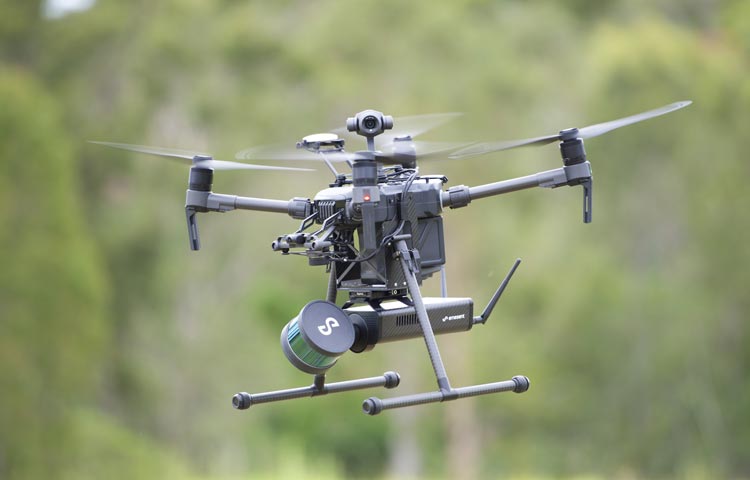Recent
-
-
Introducing Version 4.0.0 of the MicroStrain ROS Driver
Jan 29, 2024 /
-
-
-
Enhancing Vision-Based Robots with IMUs
Dec 19, 2023 /
-
-
-
MicroStrain to Join the HBK Family
Sep 18, 2023 /
-
-
-
Four Ways to Improve Your IMU Performance
Jun 30, 2023 /
-
Send in the Drones – 3 Types of Sensors Used in Drones
- By SteveM /
- Published Thu, 01/23/2020 - 09:28

The Ubiquity of Drone
The drone market will grow to $43 billion by 2024, up from $14 billion in 2018. This is due to the increase of applications to which drones are now being applied to. Some applications include aerial photography, package delivery, agriculture monitoring, 3D mapping and entertainment. As the market grows, new applications will continue to evolve.
Initially, most drones either resembled model aircraft used for surveillance, or full size aircraft, designed for military long range, high altitude weapons and surveillance platforms. Relatively simple toys followed, with little or no onboard stabilization or capacity for payloads. In recent years, however, their flying capabilities have improved significantly, making them safer, smarter, more stable and easier to control. As a result, small drones have evolved from toys to controllable aircraft capable of carrying cameras for photo survey, surveillance, and broadcast applications.
One of the key factors in this improvement has been the use of high-performance micro-electro-mechanical system (MEMS) sensors. MEMS technology enables miniaturization, mass production and cost reduction of many sensors, and the market for this technology is growing fast. This is a prospect that should cheer micromanufacturing firms who make many key components that assist today’s UAVs in flight and help them handle their challenging missions.
Smaller and Better Than Ever
Tiny MEMS sensors can be integrated into larger systems that are still very compact themselves, making them suitable for small flying machines. For example, the 3DM-GX5-25 is a miniature attitude-heading reference system featuring MEMS sensors. One version of the device combines an accelerometer, a gyro, a magnetometer, temperature sensors, pressure altimeter, and an onboard processor in a package measuring only 36.0 mm x 36.6 mm x 11.1 mm. The 3DM®-GX5-25 is the smallest and lightest precision industrial AHRS available.
A related trend is the integration of multiple UAV instruments to boost functionality as much as possible in a single system. Such instrument integration can eliminate some of the enclosures, connectors and cabling needed by UAV systems, significantly reducing their size, weight and cost. The slightly larger 3DM GX5-35 adds multi-constellation GPS/GNSS capability to the navigation toolset.
UAVs use a wide range of instruments and sensors to enhance the operation of the vehicle or to gather data. A related trend is the integration of multiple UAV instruments to boost functionality as much as possible in a single system. Such instrument integration can eliminate some of the enclosures, connectors and cabling needed by UAV systems, significantly reducing their size, weight and cost.
3 Types of Sensors in Drones
1. Inertial Measurement Units (IMUs)
Fuse together information from different sensors to provide measurements that can be used to calculate orientation, pressure altimeter and velocity of the UAV.
- Gyroscopes – determine the rate of rotation, or angular velocity and tilt
- Accelerometers – determines linear movement along any axis
- Magnetometers – indicate the direction of the magnetic field to verify heading
2. GPS/GNSS
Signals, for above-ground applictions, can provide more precise location information. Check out our GPS/INS Blog to reach more about how drones navigate and maneuver around difficult to reach locations.
3. Light Detection and Ranging (LiDAR)
Measure the reflection time of a pulsed laser beam for navigation and collision avoidance purposes as well as for mapping and other imaging applications. While MicroStrain does not make LiDAR systems, our sensors can provide timing coordination with LiDAR data, for more precise location control.










